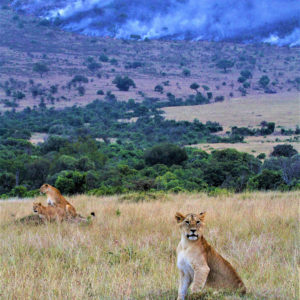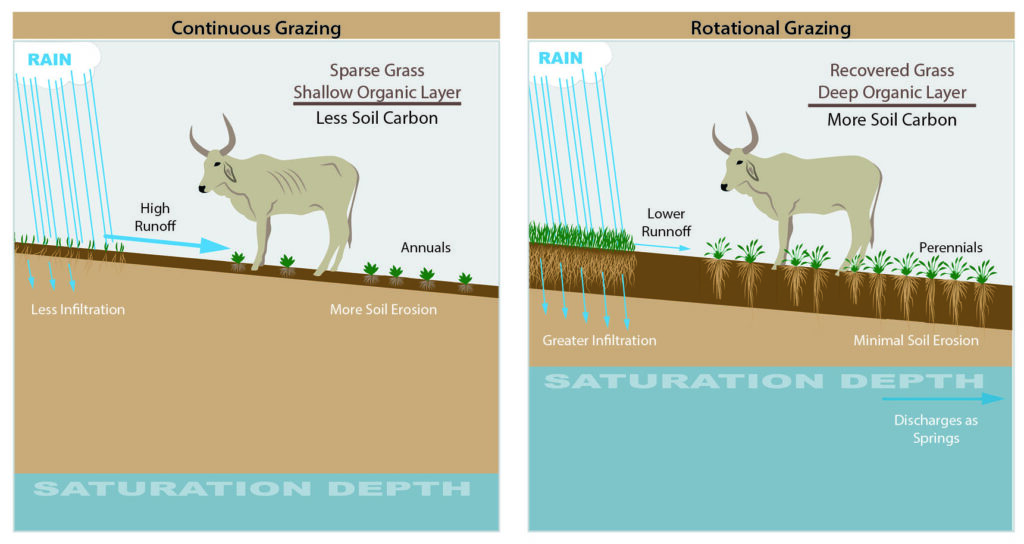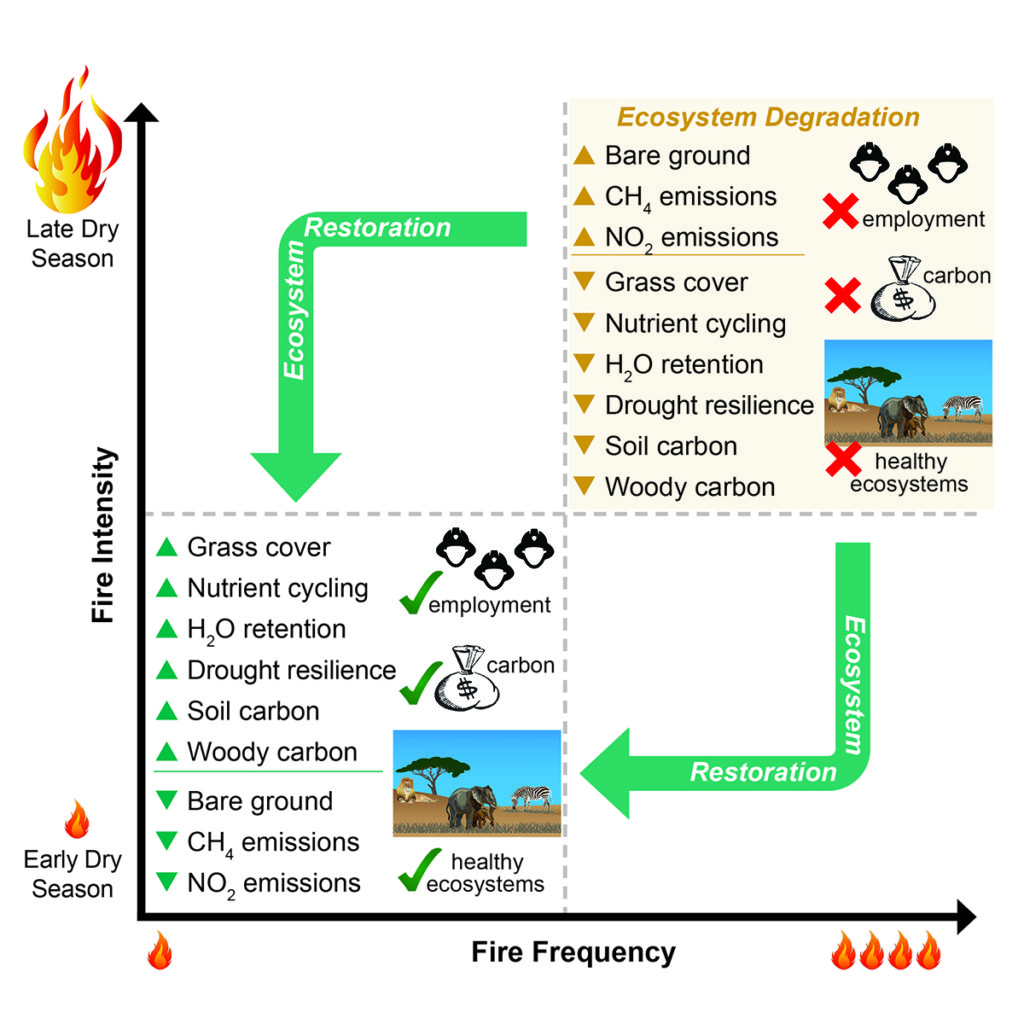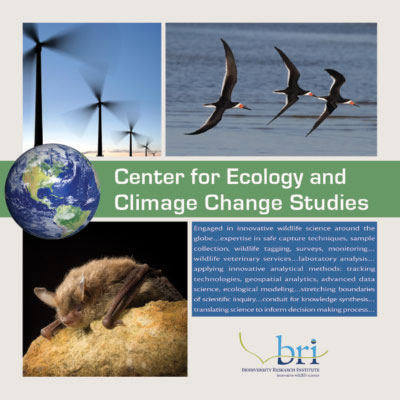
BRI announces the publication of a new scientific paper, Savanna fire management can generate enough carbon revenue to help restore Africa’s rangelands and fill Protected Area funding gaps, in the December issue of the journal One Earth. The new study builds on a history of collaborative and independent research by BRI, The Nature Conservancy (TNC), Soils for the Future, the Wildlife Conservation Society (WCS), and the Wildlife Conservation Network (WCN) that has culminated in this paper, which quantifies the benefits of savanna fire management in Africa.
Related Links
- This scientific publication was recently featured in Cool Green Science, the conservation science blog of The Nature Conservancy. Click here to read the story.
- Research cited in Science. Click here to read Savannas are vital but overlooked carbon sinks
Why Soil Carbon and Why Now?
The global imperative to address climate change continues to increase along with interest in carbon offsets, as public and private entities strive to achieve NetZero targets. The value of carbon credits are increasing as demand outstrips supply, and investors are increasingly interested in carbon sequestration and avoided emissions. Combining both sequestration and avoided emissions increases land management value.
Carbon Dioxide – Emissions and Sequestration

Related publications co-authored by program director Tim Tear:
- Savanna fire management can generate enough carbon revenue to help restore Africa’s rangelands and fill Protected Area funding gaps (Dec. 2021)
- Prediction of forest parameters and carbon accounting under different fire regimes in Miombo woodlands, Niassa Special Reserve, Northern Mozambique (Dec. 2021)
Partnership With CarbonSolve
CarbonSolve is a U.S. based company established to promote the development of carbon projects around the world. CarbonSolve’s niche in the growing carbon market is developing carbon projects in grassland and rangeland habitats where grazing and/or fire management are the dominant activities. CarbonSolve’s mission is to restore ecosystems, conserve wildlife, and enhance human socio-economic development through carbon financed land use.
CarbonSolve, in partnership with BRI and others, has recently launched a 1.5 million hectare soil carbon project in the Kajiado District of Kenya’s southern rangelands region. Click here to learn more.
Soil Carbon Projects
What influences the amount of carbon in the soil?
- Grazing Management— Rotational grazing utilizes a portion of the grazing land while allowing the remainder to rest. Livestock is rotated from section to section allowing the “resting” portion to recover. Rotational grazing leads to recovered grass, greater infiltration with lower runoff, and a deeper organic layer that absorbs more carbon. More soil carbon means greater moisture retention and nutrient cycling capacity, making the land more resilient to drought.

- Fire Management—Land managers can accomplish a “cooler” burn by intentionally starting grassland fires early in the dry season, using less woody fuel overall but still removing enough vegetation to prevent unintended high-intensity fires later in the season. As a result, less carbon emissions are released into the atmosphere, while more carbon is retained in the soil. Both outcomes are quantifiable and sellable as carbon offset credits on the global carbon market

Photo Credits: Header photo: Rangeland project site © BRI- Tim Tear; Illustrations by Iain Stenhouse.



